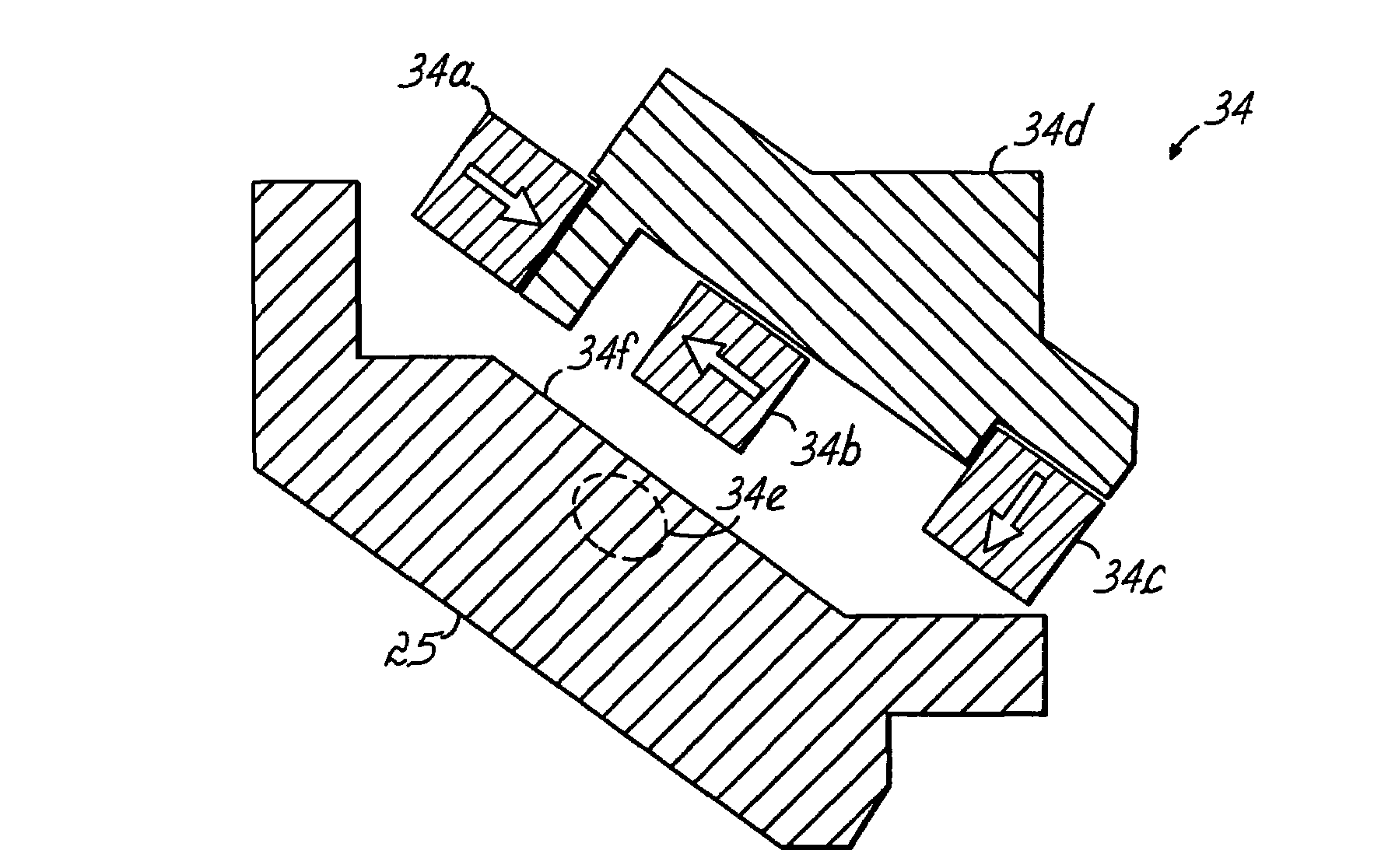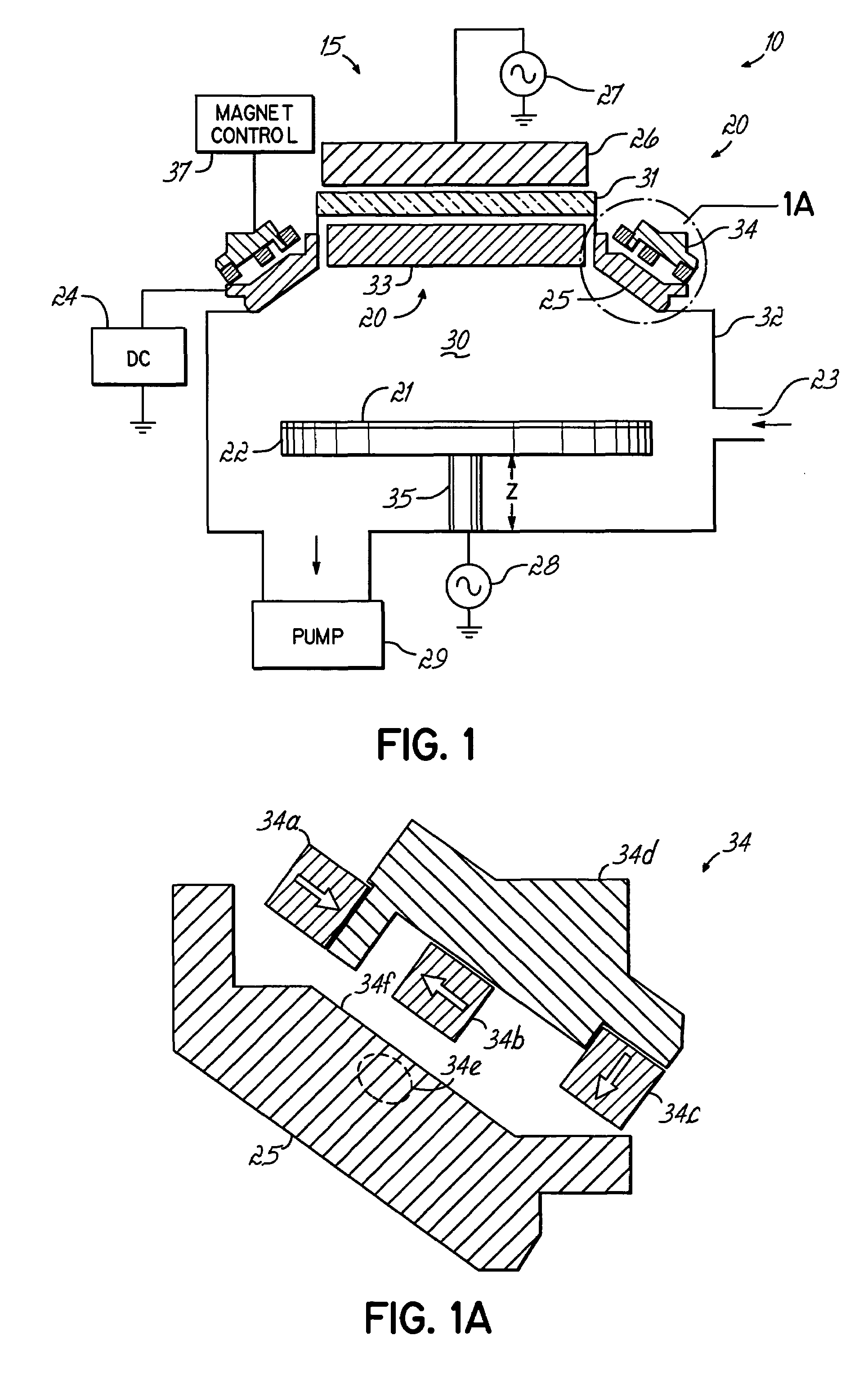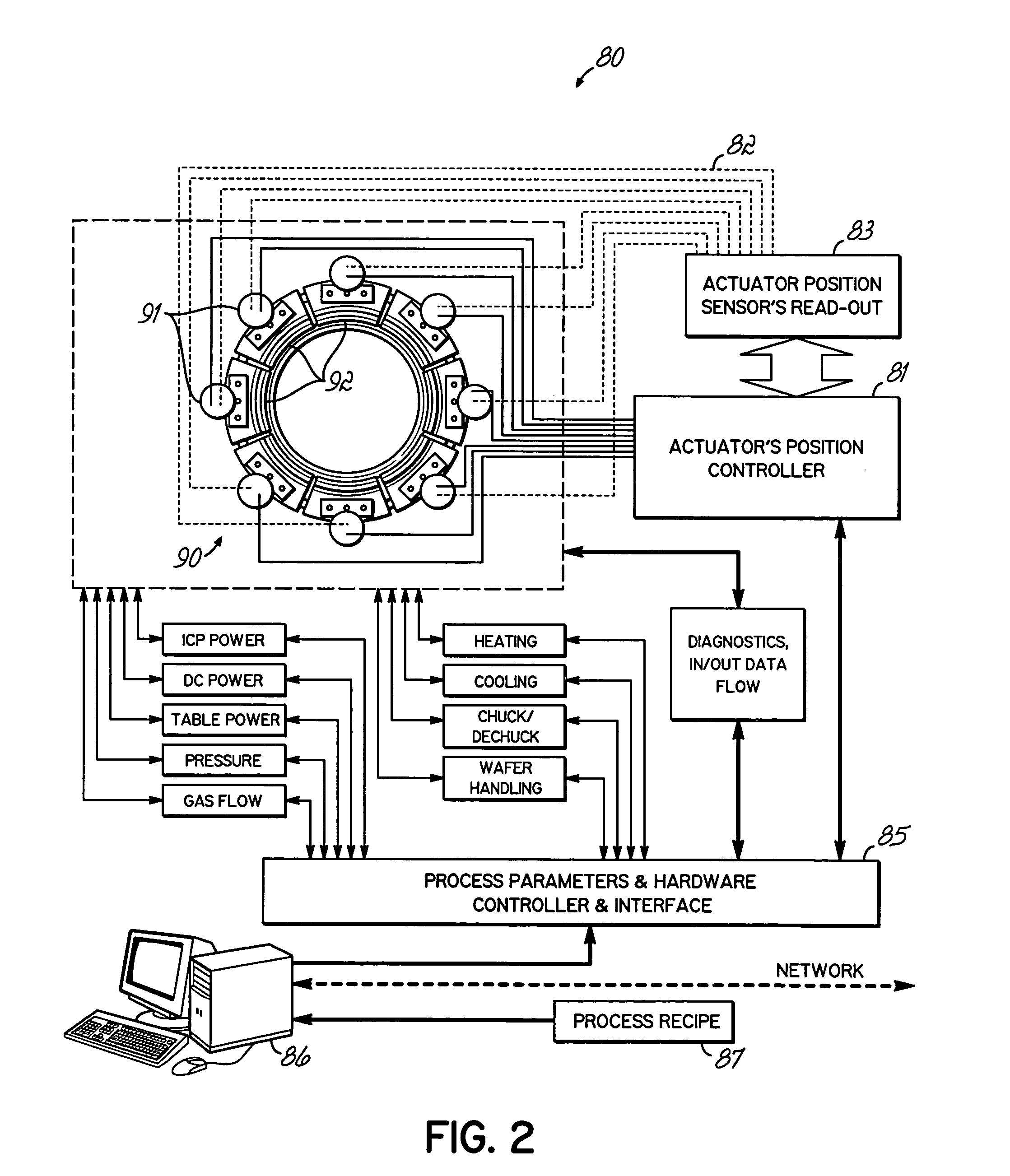Highly ionized PVD with moving magnetic field envelope for uniform coverage of feature structure and wafer
a magnetic field envelope and feature structure technology, applied in the field of metalization, can solve the problems of overhang and closure, severe deposition rate and throughput limitations of such a process, and the inability to meet the requirements of the etching system, and achieve the effect of increasing metal ionization
- Summary
- Abstract
- Description
- Claims
- Application Information
AI Technical Summary
Benefits of technology
Problems solved by technology
Method used
Image
Examples
Embodiment Construction
[0035]According to the invention in U.S. Pat. App. Publication No. 20030034244 (Yasar et al.), assigned to the same assignee as current application, a process and an apparatus are provided wherein sequential deposition and etching steps are used to solve problems set forth above. Application of that process may involve first depositing a thin layer of metallization, for example such as tantalum (Ta), tantalum nitride (TaN) or copper (Cu), and then, preferably after stopping the deposition, performing an ion etch step, preferably by ionized gas, for example such as argon (Ar). The etching step removes less material on both the field area on the top surface of the wafer and the via bottom than is deposited during the deposition step, and thus there is net deposition at the end of the process cycle. The deposition-etch cycle can be repeated as many times as needed to achieve a desired result. By balancing the deposition and etching times, rates and other deposition and etch parameters,...
PUM
| Property | Measurement | Unit |
|---|---|---|
| pressure | aaaaa | aaaaa |
| pressure | aaaaa | aaaaa |
| pressures | aaaaa | aaaaa |
Abstract
Description
Claims
Application Information
 Login to View More
Login to View More - R&D
- Intellectual Property
- Life Sciences
- Materials
- Tech Scout
- Unparalleled Data Quality
- Higher Quality Content
- 60% Fewer Hallucinations
Browse by: Latest US Patents, China's latest patents, Technical Efficacy Thesaurus, Application Domain, Technology Topic, Popular Technical Reports.
© 2025 PatSnap. All rights reserved.Legal|Privacy policy|Modern Slavery Act Transparency Statement|Sitemap|About US| Contact US: help@patsnap.com



